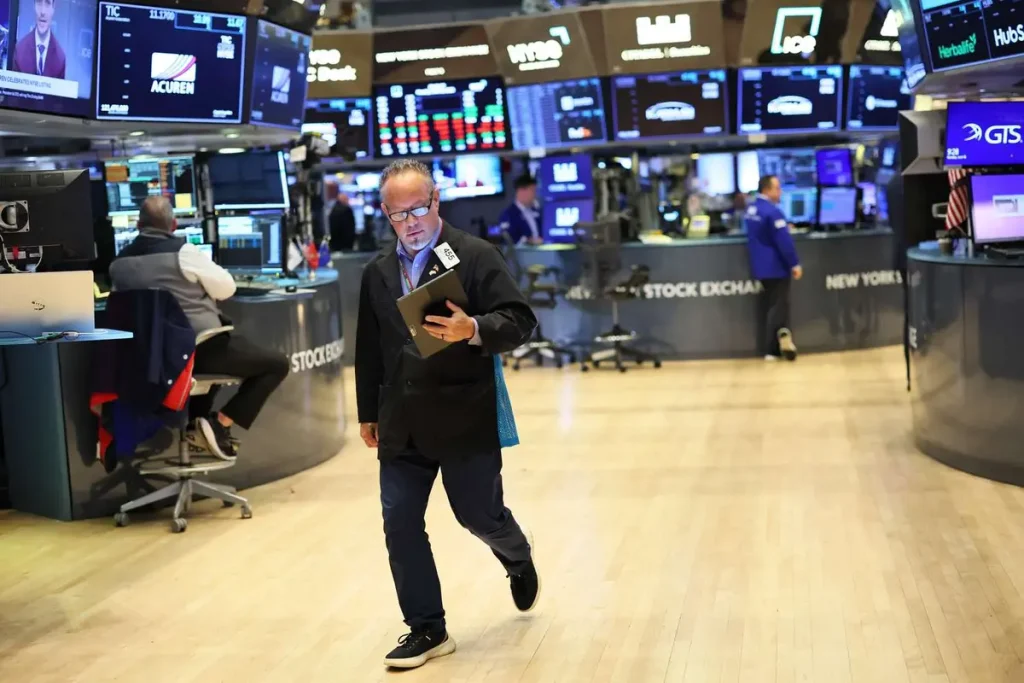Markets Recover as Middle‑East Tensions Ease
Global stock markets rebounded strongly on June 16, 2025, after a rough finish to the previous week triggered by escalating tensions between Israel and Iran. The S&P 500, Nasdaq, Dow Jones, FTSE, and major Gulf and Asian indices all posted gains, reversing Friday’s widespread decline.
In the U.S., the Dow jumped approximately 300–360 points, while the S&P 500 and Nasdaq climbed around 1%–1.5%. European equities echoed the recovery, with indices such as the FTSE 100 defending near-record highs at 8,875, and markets in the Gulf region surged by 1%–1.5%.
What Drove the Stock Market Bounce Back?
Declining Geopolitical Risk
Early signs of de-escalation—especially Iran’s openness to diplomatic initiatives—immediately improved investor sentiment. Oil prices retreated by around 1%–3%, easing fears of a strategic oil supply disruption via the Strait of Hormuz.
Resilience to Historical Precedents
Analysts noted such rebounds are not unusual. After geopolitical shocks, stock markets typically fall around 6%, then recover most losses within six weeks—unless the disruption impacts the real economy significantly.
Central Banks in Focus
Key central bank decisions—including Bank of Japan’s policy announcement, and upcoming meetings from the U.S. Federal Reserve, Bank of England, and others—have shifted investor focus toward monetary direction. While geopolitical news triggered Friday’s sell-off, attention quickly shifted to monetary policy.
Sector Dynamics Driving the Rebound
Technology Stocks: The tech-heavy Nasdaq saw a 1%–1.5% rise, led by strong gains in chipmakers and AI-related firms.
Oil & Energy: Crude prices eased, with U.S. crude slipping to around $71.50–$73.40/barrel—still elevated, but moderating from Friday’s peaks.
Commodities and Bonds: Gold lost about 1%, while longer-term U.S. Treasury yields edged higher, reflecting easing risk-off sentiment.
Safe Havens Under Pressure: Dollar and Gold Retreat
Despite geopolitical headlines, the U.S. dollar remained relatively flat, even easing slightly. Its mild performance contrasted with stronger oil and gold, signaling a shift in the traditional safe-haven narrative.
Gold’s decline (around 1% to $3,386/oz or $3,417/oz) confirms investor pivoting away from risk-off assets.
Regional Market Performance
Gulf & Asian Markets
Gulf indices rebounded strongly, including Saudi Arabia’s benchmark rising 1.2–1.3%, Qatar up 1.7%, Dubai +0.8%, and Abu Dhabi +0.2%.
Similarly, Asian markets, including Tokyo and broader Asia-Pacific, recovered lost momentum, though some caution remains due to uncertainty around oil and conflict escalation.
Was This Bounce Short‑Lived?
The sequence of events suggests a classic rebound: geopolitical shock → initial market sell-off → rapid return on easing tension and structural resilience.
However, sustainability depends on two key factors:
Oil Price Trajectory: Persistent conflict risks could push crude higher again, creating inflationary pressure.
Central Bank Response: Hawkish signals or delayed rate cuts could stall equity gains.
What Should You Watch Out For?
Federal Reserve meeting on Wednesday—markets expect rates unchanged but are monitoring forward guidance on rate cuts (approx. 46 bps cuts priced in by year-end).
Bank of Japan, Bank of England, and other central bank decisions.
Upcoming economic data: U.S. retail sales, industrial output, import prices, and investor sentiment indices.
Stock Market Bounce Back or Early Rally?
The stock market bounce back reflects a blend of reduced geopolitical anxiety and a shift to monetary policy optimism. Indices have returned close to recent highs, but the rebound’s longevity hinges on:
Continued easing of Middle East tensions without oil supply disruption.
Accommodative central bank stances and stable inflation data.
If these factors hold, the bounce may mark a solid recovery phase rather than a short-lived rally.


